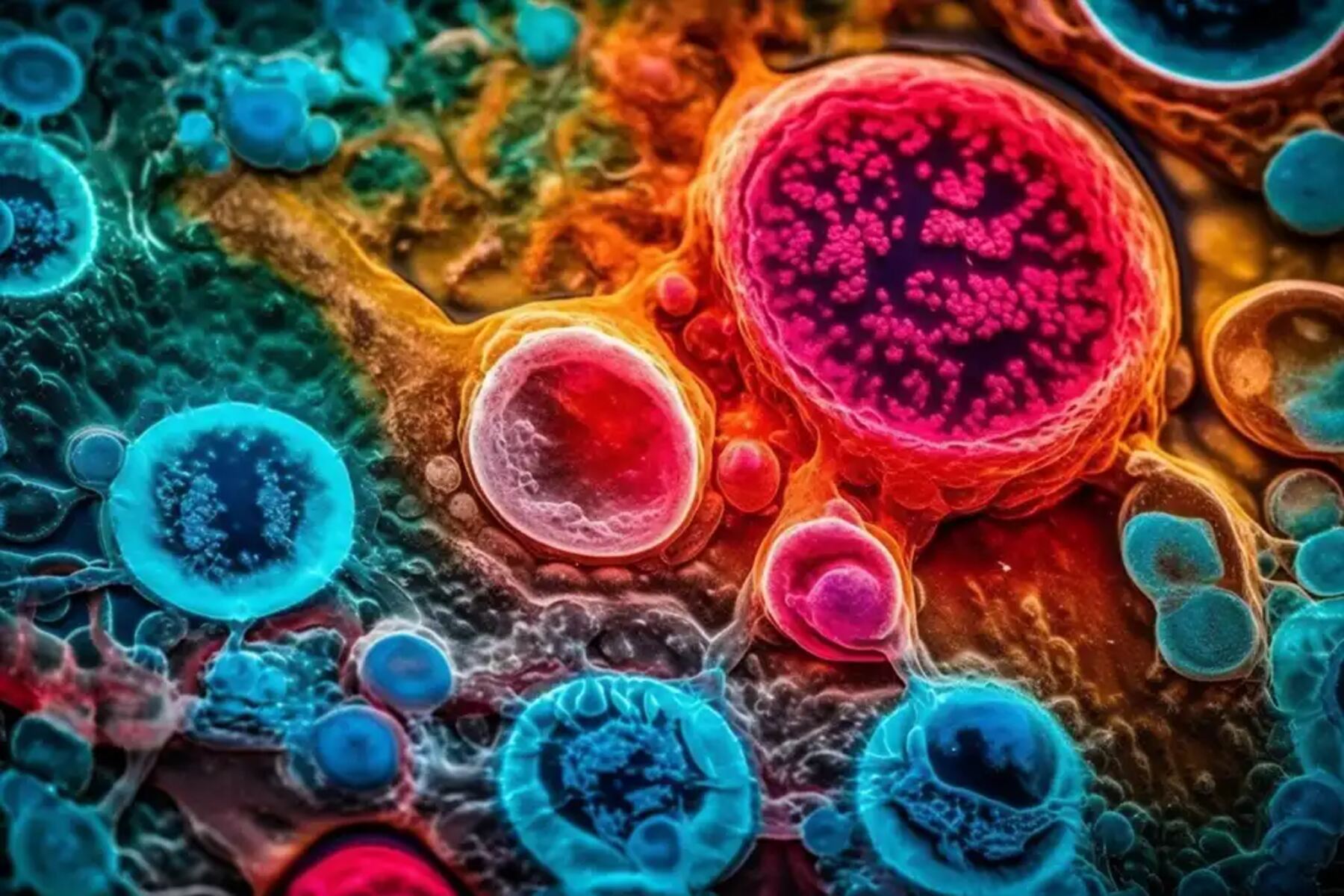
Stem cell research has been a fascinating and rapidly evolving field of study that has attracted the attention of scientists and researchers from around the world. Stem cells, with their unique ability to differentiate into various types of cells in the body, hold immense potential for medical advancements and treatments of various diseases and conditions.
In this article, we delve into the enigmatic world of stem cell research and highlight 15 intriguing facts that will expand your knowledge and understanding of this groundbreaking field. From their discovery to their applications in regenerative medicine, stem cell research continues to revolutionize the way we approach healthcare and holds the promise of a future with improved treatments and therapies.
So, let’s embark on this journey and explore the amazing world of stem cells and the remarkable work being done in the field of stem cell research.
Key Takeaways:
- Stem cells have the amazing potential to treat a wide range of diseases, from cancer to spinal cord injuries, by transforming into specialized cell types. This offers hope for revolutionary regenerative medicine treatments.
- Stem cell research is a dynamic field with constant new discoveries. It holds promise for creating organs, understanding aging, and even contributing to economic growth through innovative therapies.
Stem cells have the potential to treat a wide range of diseases.
Stem cell research holds promise for treating various conditions including cancer, Alzheimer’s disease, spinal cord injuries, and diabetes. The unique ability of stem cells to differentiate into specialized cell types makes them a valuable tool in regenerative medicine.
Stem cells can be derived from various sources.
Stem cells can be obtained from embryos, adult tissues, and even amniotic fluid. Embryonic stem cells, in particular, are pluripotent and have the ability to develop into any type of cell in the body.
Stem cell research is controversial.
The use of embryonic stem cells raises ethical concerns for some individuals due to the destruction of embryos during the process. This controversy has sparked debates and discussions worldwide.
Induced pluripotent stem cells (iPSCs) are a recent breakthrough.
Scientists have developed a technique to reprogram adult cells into iPSCs, which behave similarly to embryonic stem cells. This discovery has opened up new possibilities for studying diseases and developing personalized treatments.
Stem cell research is regulated to ensure ethical practices.
Many countries have established guidelines and regulations to govern stem cell research, ensuring that it is conducted responsibly and with respect for ethical standards.
Stem cells can be used for drug testing.
By growing specialized cells from stem cells, researchers can test the effects of new drugs in a controlled environment. This can potentially reduce the need for animal testing and make drug development more efficient.
Stem cells may hold the key to understanding the aging process.
By studying the behavior of stem cells, scientists hope to uncover insights into the mechanisms behind aging and potentially develop interventions to slow down or reverse the aging process.
Stem cell therapies are still in the experimental stage.
Although the potential of stem cell therapies is immense, many treatments are still in the experimental phase and have not yet been approved for widespread clinical use.
Stem cells can be used to create functional organs.
Researchers are exploring the possibility of using stem cells to generate organs that can be used for transplantation, addressing the shortage of donor organs.
Stem cells can be stored for future use.
Stem cell banks allow individuals to store their own stem cells for potential future use in regenerative therapies, providing a personalized approach to healthcare.
Stem cells are being used in veterinary medicine.
Veterinary medicine has also embraced the potential of stem cell therapies, with treatments available for conditions such as arthritis in dogs and horses.
Stem cells have the ability to repair damaged tissues.
When injected into injured tissues, stem cells can promote healing and regeneration, offering new hope for patients with conditions such as heart disease or spinal cord injuries.
Stem cell research has sparked advancements in tissue engineering.
Combining stem cells with biomaterials, scientists are creating artificial tissues and organs in the lab, paving the way for future medical advancements.
Stem cell research has economic implications.
The field of stem cell research has the potential to contribute to economic growth through the development of innovative therapies and the creation of jobs in the biotechnology sector.
Stem cell research is constantly evolving.
New discoveries and breakthroughs in stem cell research are being made regularly, expanding our understanding of their potential applications and driving the field forward.
Conclusion
In conclusion, stem cell research holds incredible potential to revolutionize the field of medicine and provide solutions for various diseases and conditions. These enigmatic cells possess the remarkable ability to differentiate into any type of cell in the body, making them a valuable resource for regenerative medicine and tissue engineering.The 15 facts about stem cell research highlighted in this article shed light on the fascinating world of stem cells, from their discovery to their therapeutic applications. From understanding their role in embryonic development to harnessing their regenerative properties, researchers are constantly exploring new avenues to unlock the full potential of these cells.Despite the controversies surrounding stem cell research, it is essential to prioritize ethical practices and regulations to ensure its responsible and beneficial application. With continued advancements and scientific breakthroughs, stem cell research has the potential to offer new hope for patients and transform the future of medicine.
FAQs
1. What are stem cells?
Stem cells are undifferentiated cells that have the ability to develop into different types of specialized cells in the body.
2. Where do stem cells come from?
Stem cells can be sourced from various places, including embryos, adult tissues, and umbilical cord blood.
3. What is the importance of stem cell research?
Stem cell research is important because it has the potential to unlock treatments and cures for a wide range of diseases and injuries.
4. Are there different types of stem cells?
Yes, there are different types of stem cells, including embryonic stem cells, adult stem cells, and induced pluripotent stem cells.
5. How are stem cells used in medicine?
Stem cells can be used in medicine for regenerative purposes, such as replacing damaged cells, tissues, or organs.
6. Are there any ethical concerns related to stem cell research?
Yes, the use of embryonic stem cells raises ethical concerns due to the destruction of embryos. However, alternative sources of stem cells, such as adult stem cells, have reduced these concerns.
7. What are some potential applications of stem cell research?
Stem cell research has the potential to treat conditions like Parkinson’s disease, Alzheimer’s disease, diabetes, spinal cord injuries, and heart disease, among others.
8. Is stem cell research regulated?
Yes, stem cell research is subject to regulations and guidelines to ensure ethical practices and the responsible use of stem cells.
9. How long has stem cell research been around?
Stem cell research has been ongoing for several decades, with significant advancements made in recent years.
10. Can stem cells be used in personalized medicine?
Yes, stem cells have the potential to be used in personalized medicine, as they can be derived from a patient’s own cells and used for customized treatments.
11. What challenges are associated with stem cell research?
Some challenges include the ethical debate, safety concerns, and the need for more research to fully understand the potential of stem cells.
12. Are there any limitations to stem cell research?
Limitations include the difficulty in controlling the differentiation of stem cells and the risk of tumor formation if not properly regulated.
13. Can stem cells be used to treat genetic disorders?
Yes, stem cells hold promise in treating genetic disorders by replacing faulty genes or repairing damaged cells.
14. How are stem cells being used in research?
Stem cells are being used in research to study diseases, test potential treatments, and gain a better understanding of cellular processes.
15. Can stem cells be used for cosmetic purposes?
While stem cells are being explored for cosmetic applications, more research is needed to determine their safety and effectiveness.
Stem cell research continues to captivate scientists and the public alike, holding immense promise for medical breakthroughs. If you're eager to explore more mind-boggling facts about this groundbreaking field, consider delving into the intricacies of embryonic stem cell research, which has its own set of unique challenges and opportunities. For a broader perspective, check out our collection of extraordinary facts about stem cells, showcasing their versatility and potential across various applications. And don't miss the opportunity to learn about Dr. Shinya Yamanaka, a pioneering figure whose astounding contributions have shaped the landscape of stem cell research as we know it today.
Was this page helpful?
Our commitment to delivering trustworthy and engaging content is at the heart of what we do. Each fact on our site is contributed by real users like you, bringing a wealth of diverse insights and information. To ensure the highest standards of accuracy and reliability, our dedicated editors meticulously review each submission. This process guarantees that the facts we share are not only fascinating but also credible. Trust in our commitment to quality and authenticity as you explore and learn with us.


